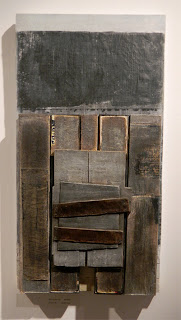Selective Memory 2 – symbols and their power. This exhibit is a sequel to the exhibit “
Selective Memory 1” held in late 2008 which focused specifically on Kristallnacht and the subject of evil in general. This exhibit focuses on the symbols of this period and their power and anything that has a connotation associated with the utter chaos, insanity and inhumanity that prevailed during the Nazi era: the Magen David (Star of David) and the yellow star, the German eagle, clothing, buttons, moldy food scraps, destruction, looting, parts of broken toys, heavy locked gates, barbed wire, piles of glass shards that accumulated on the streets as a result of the shattered windowpanes of stores and homes owned by Jews. The vast majority of the artists participating in this exhibit are first generation Holocaust survivors as well as second generation children of Holocaust survivors, and those for whom the Holocaust is a significant component in their familial history. These artists have joined the ranks of many other artists who create art in Israel and whose works feature elements of pain and suffering, that derive from the national, cultural and historical past of the Jewish people, wrought with tragedy and suffering, even though they themselves nor their families actually ever experienced the atrocities of the Holocaust. This is because we stand in solidarity with our people. Artists, who touch upon the essence of the symbols of evil and convey personal and family “memories” in their works dating from the pre-Holocaust era, the course of the war, the labor and extermination camps and how Jews ran a traditional Jewish household in the Diaspora in the pre-war and post-war periods. They give voice to the imprint that the suffering experienced by their families and the families of their friends has left upon them personally. All this occurs against a backdrop of symbols and life-altering events that are portrayed according to their point of view vis-a-vis this same period. The important message embodied in this exhibit is: the Holocaust must be remembered and never forgotten! Meaning – we should mull over it again and again, discuss it and delve into it, from every possible angle, write, paint and tell the story of those who perished, who can no longer tell their story, the story that they would have wanted us to pass on to the coming generations, something akin to additional “illustrations’ of documents contained in a history book on the Jewish people, conveyed from an artistic perspective. We cannot allow anyone to make people forget it ever happened or to deny it, as there are still those who deny that the Holocaust actually happened, and those who threaten to clear the way for a repeat performance.
Avya Mamon – curator amamon@netvision.net.il





































